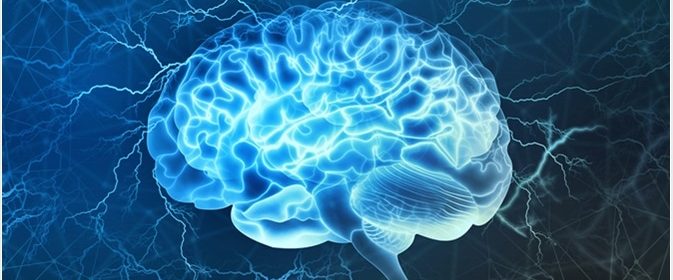The Neocortex and Motor Commands

The neocortex, meaning ‘new bark’ in Latin, is thought by evolutionists to be the newest addition to the mammalian brain. It is responsible for a variety of higher-order brain functions, including:
- Cognition
- Sensory perception
- Spatial reasoning
- Language
- Semantic memory
- Motor commands

Structure of the Neocortex
The neocortex makes up the greater area of the cerebral cortex. It is divided into different regions (the frontal, parietal, occipital, and temporal lobes) by the bone structure of the skull above it.
The neocortex is the most developed area of the brain, distinguished by six layers containing between 10 to 14 billion neurons, and approximately the same number of glial cells.
These six layers are numbered with Roman numerals from I to VI, progressing from superficial to deep within the brain:
- Layer I – the molecular layer
- Layer II – the external granular layer
- Layer III – the external pyramidal layer
- Layer IV – the internal granular layer
- Layer V – the internal pyramidal layer
- Layer VI – the fusiform layer
Each cortical layer has neurons of different shapes, densities and sizes, and different organizations of nerve fibers. The layers can be separated by function:
- Layers I to III permit communication between one portion of the cortex and other brain regions
- Layer IV contains neurons connecting the cortex with thalamic nuclei (thalamocortical connections)
- Layers V to VI connect the cerebral cortex with subcortical regions; these layers are highly developed in the motor cortex
These six layers enable the neocortex to have widespread interconnectivity with the rest of the brain and body. This intricate neuroanatomical structure is what gives rise to the higher order behaviours and capabilities in humans.
Motor Commands and the Motor Cortex
Motor commands are an example of a higher order function, in which the central nervous system produces purposeful, coordinated movements that interact with the rest of the body and the environment. This requires the integration of sensory information about the immediate environment and the current state of the body, in order to stimulate the necessary muscles at the required force to execute the appropriate movement.
The motor cortex makes up several regions of the neocortex involved in the planning, control and execution of voluntary movements. There are several neuroanatomically distinct regions of the neocortex which are involved in motor commands:
Primary Motor Cortices
The primary motor cortex is situated in the precentral gyrus of the frontal lobe. This region is largely involved in the generation of neural impulses that eventually lead to the execution of voluntary movements. The neuroanatomical structure of the primary motor cortex is adapted to this role:
- It contains the origin of most of the corticospinal tracts which innervate the muscles of the body, and a large number of corticobulbar fibers which control the muscles of the head, neck, and face
- It has projections to, and receives considerable input from, the thalamus, a region which significantly contributes to arousal
- It has many projections to the basal ganglia, a collection of nuclei responsible for action selection
- It has a highly defined somatotopic organisation. This map has been suggested to represent specific movements rather than individual muscles, with similar movements being situated next to each other in the cortex.
Premotor Cortex
The premotor cortex is located immediately anterior to the primary motor cortex. It has many reciprocal connections to the primary motor cortex, and to the brainstem and spinal cord. Most notably, the premotor cortex also receives input from the sensory association cortex, along with feedback from the basal ganglia via the thalamus.
Due to its connections with sensory areas of the brain, the premotor cortex is suggested to be important in conditional motor tasks:
- The lateral premotor cortex is responsible for the selection of movements based on visual or auditory external stimuli
- The medial premotor cortex is responsible for the selection and initiation of movements, or sequences of movements, specified by internal cues
- The premotor cortex also contributes to the spatial and sensory guidance of movement
The Supplementary Motor Area
The supplementary motor area is located anterior to the primary motor cortex and medial to the premotor cortex. It has strong connections with the primary motor cortex, the basal ganglia, thalamus, and brain stem.The supplementary motor area can be divided into two regions:
- The pre-supplementary motor area is more caudally situated, and is thought to be involved in the planning of learned and complex movement, and the learning of new motor sequences.
- The supplementary area proper is situated more rostrally, and is involved in the planning of learned complex movements, postural control during walking, and the coordination of movements involving both hands. This is achieved by its strong contralateral connections with the supplementary area of the other hemisphere.
Sources
- https://www.ncbi.nlm.nih.gov/pmc/articles/PMC2913577/
- https://qbi.uq.edu.au/brain/brain-anatomy/lobes-brain
- https://www.sciencedirect.com/science/article/pii/S1364661306001045
- https://www.dartmouth.edu/~rswenson/NeuroSci/chapter_11.html
- http://dev.biologists.org/content/141/1/11
- https://www.ncbi.nlm.nih.gov/books/NBK10796/
- link.springer.com/referenceworkentry/10.1007%2F978-0-387-79948-3_368
- https://www.ncbi.nlm.nih.gov/pmc/articles/PMC3017756/
Further Reading
- All Neocortex Content
- The Neocortex and Sensory Perception
- What is the Neocortex?
Last Updated: Mar 5, 2019
Source: Read Full Article